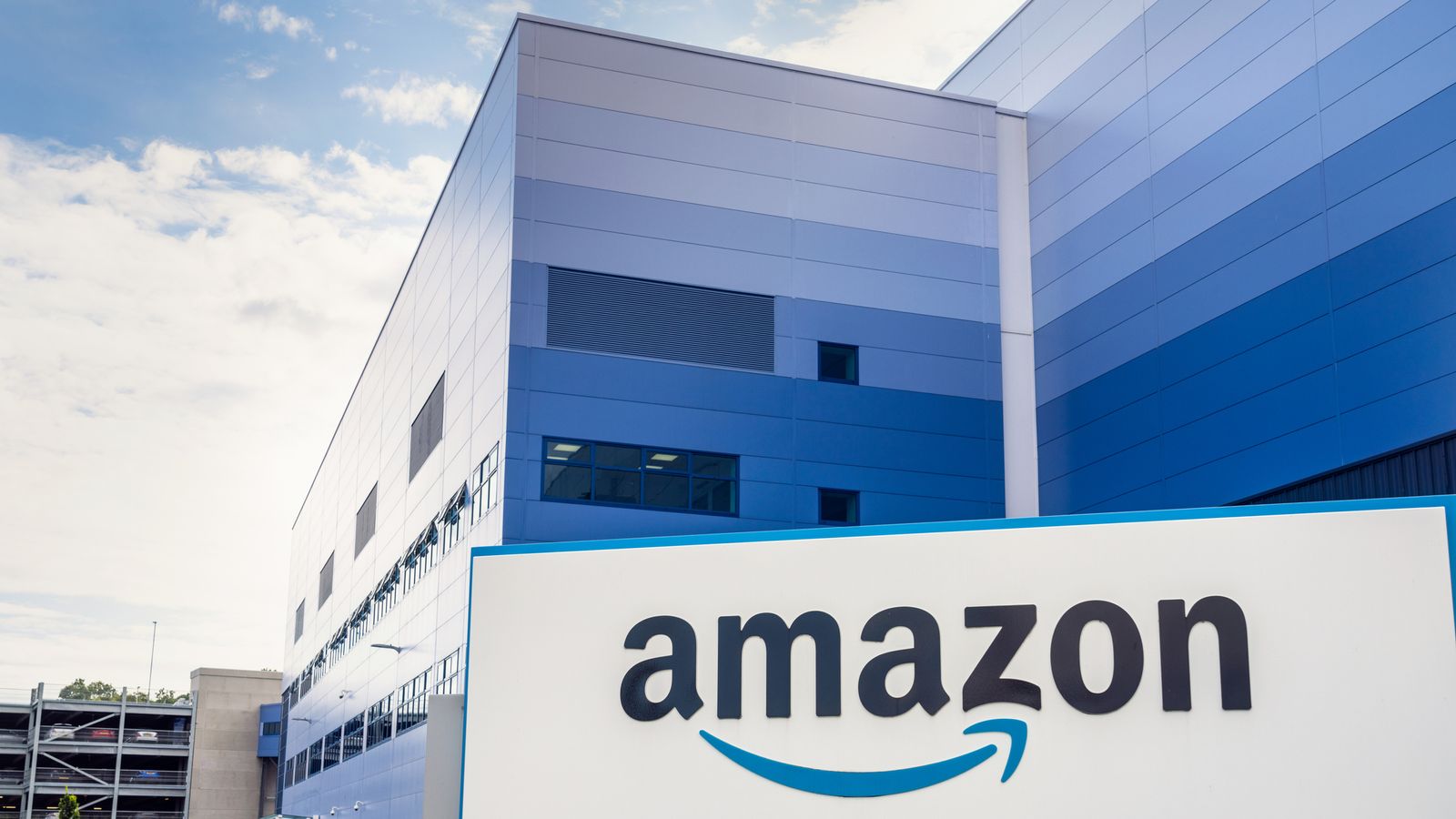Amazon value down as slowest growth expected over Christmas period

Shares in Amazon fell as the company expected slower Christmas sales and increased expenses.
Shares fell nearly 20% as inflation and interest rate costs threatened to eat up profits.
The world’s largest online retailer forecast comparatively weak growth for the next three months, typically the busiest Christmas period.
The lacklustre forecast came at the same time that operating expenses increased. Those costs came to $355.3bn (£308bn) for the nine months up to the end of September this year, up from $311bn (£269.7bn) during the same period last year.
One of the higher costs the company has grappled with after the pandemic is mounting shipping prices. They rose from $19.6bn (£17bn) in the first three months of this year to $20bn (£17.3bn) in the third quarter.
And while sales are expected to increase over the next three months, the growth is below what analysts had expected.
Net sales are expected to be between $140bn (£121.4bn) and $148bn (£128.3bn), equivalent to growth of 2% and 8% on the same three months last year. That would be the slowest holiday-quarter growth in the company’s history and down on analysts’ expected $155.2bn (£134.5bn).
That is despite efforts by the company to raise more revenue and reduce costs. The rollout of new facilities has been slowed, warehouses have been rented out and a hiring freeze implemented in some parts of the business. Increased revenue has been sought across the board including increasing the cost of its fast shipping service Prime.
There had been fears of a slowdown at the company from earlier this year as the COVID-19 boom in sales came to an end.
Advertisement
So far the efforts had not yielded big results. Amazon’s net sales were $127.1bn (£110.1bn) in the third quarter, less than analysts’ expectations of $127.5bn (£110.5bn).
The lucrative Amazon Web Services (AWS) data-storage and computing division also fell short of estimates. Sales did increase to $20.5bn (£17.8bn) but it was also below the expected $21.1bn (£18.3bn).
Addressing the strong headwinds CEO Andy Jassy said: “We’re also encouraged by the steady progress we’re making on lowering costs in our stores fulfilment network, and have a set of initiatives that we’re methodically working through that we believe will yield a stronger cost structure for the business moving forward.
“There is obviously a lot happening in the macroeconomic environment, and we’ll balance our investments to be more streamlined without compromising our key long-term, strategic bets.”